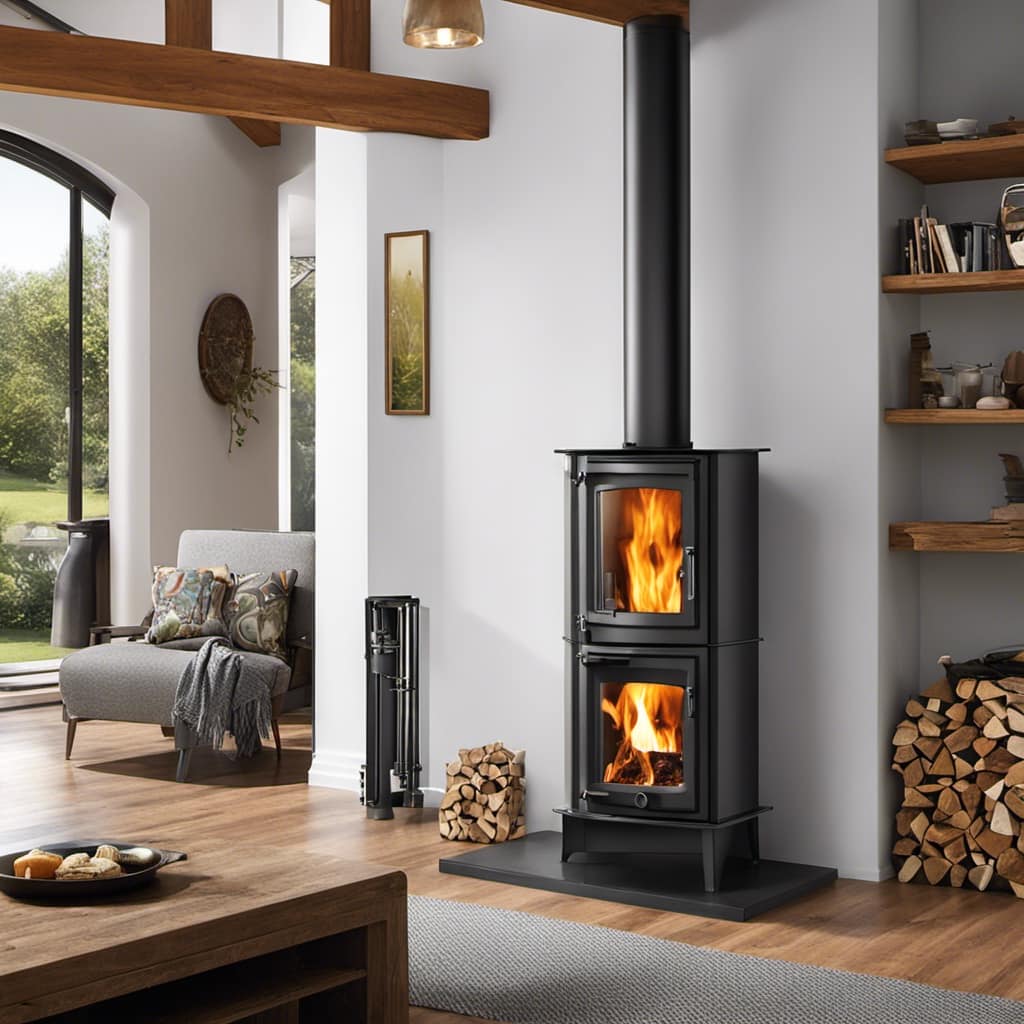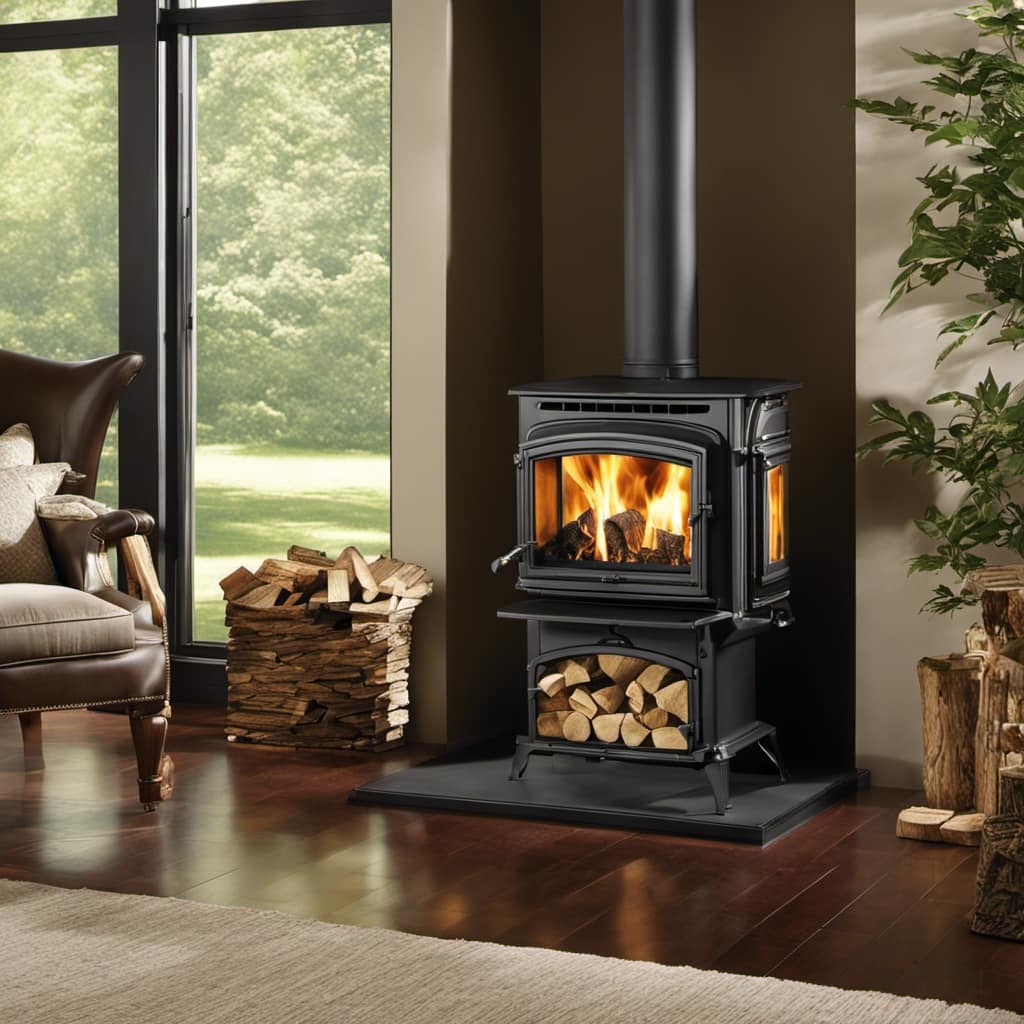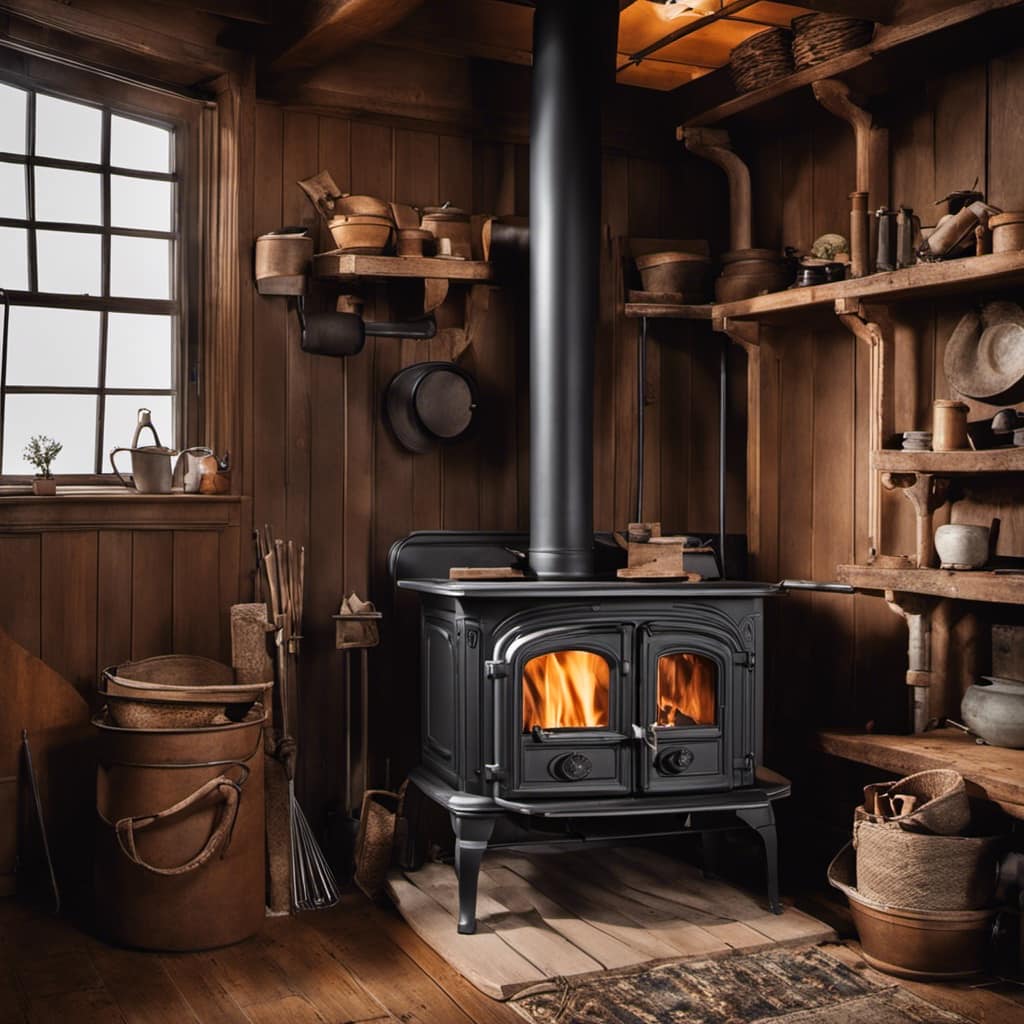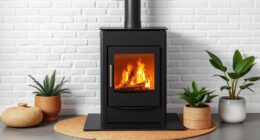I have observed a white powder developing around the seal of my wood-burning stove, and I believe others may have noticed something similar. What is the root cause of this occurrence?
In this article, we’ll explore the potential causes of this white powder buildup and how moisture and combustion byproducts play a role.
I’ll also provide some tips for preventing and eliminating this pesky powder.
So, let’s dive in and get to the bottom of this mystery!

Key Takeaways
- The white powder around wood stove gaskets is caused by ash and soot particles accumulating around the gasket over time.
- Poorly sealed gaskets allow hot gases and ash particles to escape and deposit on surrounding areas, contributing to white powder formation.
- Usage of low-quality gasket material can break down and produce white powder.
- Excessive moisture can degrade gaskets, leading to air leakage, decreased efficiency, and safety hazards.
Potential Causes of White Powder Formation
I’ve noticed that there are several potential causes for the white powder formation around the wood stove gasket. This white powder is often a result of ash and soot particles that have accumulated around the gasket over time.
The primary cause of this formation is a poorly sealed gasket, which allows hot gases and tiny ash particles to escape and deposit on the surrounding areas. Another cause could be the usage of low-quality gasket material that tends to break down and produce the white powder.
Additionally, a lack of regular maintenance and cleaning can contribute to this issue. To prevent the formation of white powder, it’s important to ensure a proper seal between the gasket and the stove, use high-quality gasket materials, and regularly clean and maintain the gasket area.
Understanding the Effects of Moisture on Wood Stove Gaskets
What are the potential effects of moisture on wood stove gaskets?

Moisture can have significant effects on wood stove gaskets, which are crucial for maintaining a proper seal and ensuring optimal stove performance. Here are four key considerations regarding the impact of moisture on wood stove gaskets:
- Deterioration: Excessive moisture can cause gaskets to degrade and lose their flexibility, leading to reduced effectiveness in sealing the stove’s doors and joints.
- Leakage: When gaskets deteriorate due to moisture, they can no longer provide an airtight seal, resulting in air leakage and decreased efficiency in heat output.
- Energy loss: Poorly sealed gaskets allow warm air to escape, leading to energy wastage and increased heating costs.
- Safety concerns: Moisture-damaged gaskets can compromise the stove’s ability to control the combustion process, increasing the risk of carbon monoxide leaks and potential hazards.
To mitigate these issues, regular moisture control measures and timely gasket replacement are essential for maintaining optimal wood stove performance and safety.
The Role of Combustion Byproducts in White Powder Formation
I can explain the role of combustion byproducts in the formation of white powder.
When a wood stove is in use, it undergoes chemical reactions that produce combustion byproducts. These byproducts include carbon dioxide, water vapor, and various other gases. However, they also contain small particles of ash and soot.

As the combustion gases pass through the gasket, they can deposit these particles onto its surface. Over time, these deposits can accumulate and form a white powder.
The composition of the gasket plays a crucial role in this process. Some gasket materials are more prone to collecting and retaining these byproducts, leading to more significant powder formation.
Understanding the interaction between combustion byproducts and gasket composition can help in developing gaskets that are more resistant to powder formation, improving the performance and longevity of wood stoves.
Tips for Preventing White Powder Buildup Around Wood Stove Gaskets
I’ve found that regularly cleaning and inspecting the gasket can help prevent white powder buildup around wood stove gaskets. This is crucial for preventing gasket deterioration and ensuring the proper functioning of your wood stove.

Here are some tips to help you keep your gasket in top condition:
- Clean the gasket regularly using a soft brush or cloth to remove any debris or residue.
- Inspect the gasket for any signs of wear or damage, such as fraying or cracking.
- Replace the gasket if necessary to maintain a proper seal and prevent heat loss.
- Ensure proper installation of the gasket by following the manufacturer’s instructions carefully.
By following these steps, you can prevent the formation of white powder around your wood stove gasket and ensure that your wood stove operates efficiently.
Now, let’s dive into the details of cleaning and maintaining wood stove gaskets to eliminate this white powder completely.
Is the White Powder Around Wood Stove Gasket Harmful and Should It Be Removed Regularly?
The wood stove ash removal frequency depends on the build-up of the white powder around the gasket. This powder is harmless but should be removed regularly to prevent damage to the gasket. A weekly removal schedule can help maintain the stove’s efficiency and prevent any potential harm.
Cleaning and Maintaining Wood Stove Gaskets to Eliminate White Powder
I’ve noticed that regular cleaning and maintenance of wood stove gaskets can effectively eliminate the white powder buildup. Cleaning techniques play a vital role in ensuring the longevity and efficiency of wood stove gaskets.

The white powder buildup often occurs due to the deterioration of the gasket material, which can lead to air leakage and decreased stove performance. To address this issue, it’s important to implement proper cleaning techniques.
Firstly, remove any loose debris or residue from the gasket using a soft brush or cloth. Next, apply a mild detergent or specialized gasket cleaner to remove stubborn stains. Gently scrub the gasket with a soft brush and rinse thoroughly.
Conclusion
After exploring the potential causes of white powder formation around wood stove gaskets and understanding the effects of moisture and combustion byproducts, it’s clear that prevention is key.
By following proper cleaning and maintenance techniques, you can eliminate the pesky white powder buildup.

So, next time you gaze at your immaculate wood stove gasket, remember that sometimes, even the tiniest white powder can teach us the importance of diligence and attention to detail.
Growing up surrounded by the vast beauty of nature, Sierra was always drawn to the call of the wild. While others sought the comfort of the familiar, she ventured out, embracing the unpredictable and finding stories in the heartbeat of nature.
At the epicenter of every remarkable venture lies a dynamic team—a fusion of diverse talents, visions, and passions. The essence of Best Small Wood Stoves is crafted and refined by such a trio: Sierra, Logan, and Terra. Their collective expertise has transformed the platform into a leading authority on small wood stoves, radiating warmth and knowledge in equal measure.











